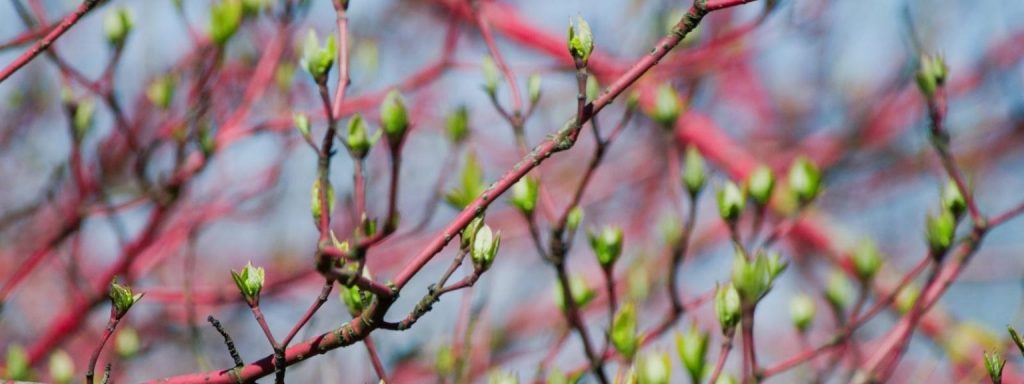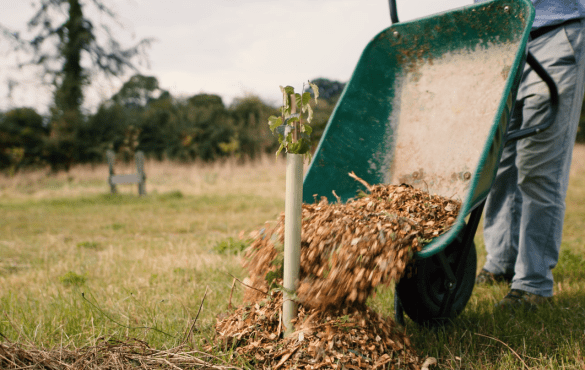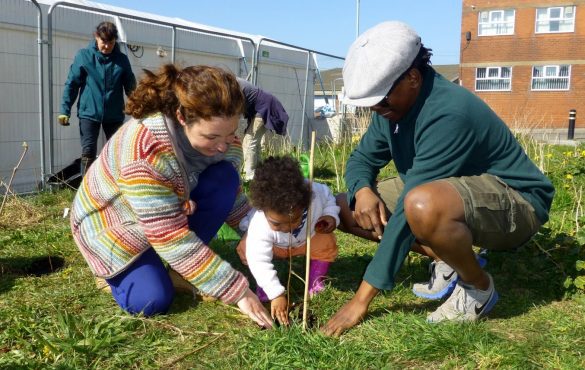TCV’s tree companion care series ensures young tree whips have the best chance of survival.
The Conservation Volunteers (TCV) offer free trees for communities as part of the hugely successful I Dig Trees programme. With the help of people like you, we are planting millions of healthy trees for climate, for wildlife and for communities.
Head here for the second blog in this series – caring for new trees. And be sure to read to the end of this article to see our video guide on how to plant your trees!
Looking after your new tree arrivals
Your trees have enjoyed a full year growing from seed in the comfortable environment of a nursery. They’ve been looked after throughout the season and checked for quality before being sent out into the environment where they’ll live the rest of their lives – thriving to maturity, capturing carbon and providing a home for an array of beautiful wildlife.
The trees are entering the most crucial stage in their lives
In nature, when a seed hits the ground or is planted (it’s not just humans who plant seeds, birds and rodents do too!) and germinates, that’s where it will stay for good.
But your trees have experienced an incredible upheaval. They’ve been dug up, packed, and spent days in transit. That’s a real stress for any plant – but they are still young, hardy, and adaptable. If you take good care of them during this transition, they’ll be eager to grow, and you’ll be giving them the best possible start in life.

Getting the trees safely in the ground
As soon as we ‘lift’ trees (dig up the saplings) we ship them quickly in moisture-retaining packaging and what you do with them when they arrive is critical.
Tree planting season in the UK runs from November to March (essentially colder months when they are not actively growing). You can plant trees at any time during the season before they start to ‘wake up’ from their dormant state. But you can’t hold on to them for too long even during the season.
They need to be in the ground as quickly as possible to stay healthy.
Can I plant the trees straight away?
Yes!
Carefully unwrap your trees and check them over. Make sure they’re the species you chose, look for signs of damage. The roots should be moist – keep them that way. If they’re looking a little dry, then splash them with some water.
Always keep them covered in the bags they came in for as long as possible, don’t be tempted to spread them out on the ground too soon. Even in winter, roots exposed to the air can dry out in minutes.
Dig your hole and get the tree in as quickly as possible for the best chance of survival.

It’s a few days until I’m ready to plant our trees. What do I do?
That’s ok, if they’re kept in the bag and the roots are moist, they can survive for up to a week, no more than two weeks.
We only ship trees in the planting season when deciduous trees are dormant. They’ve stored all the energy they need in their roots and will stay this way until the weather warms and spring arrives. But they’ll need healthy moist roots to start growing, so keep them cool, moist and in a dark sheltered place.
Tree planting has been delayed: I can’t plant the trees for a few weeks
This happens. The weather might be inclement, or your tree planting event plans have changed.
That’s ok too, but you’ll need to give the trees a little more care and attention.
Again, it’s all about keeping the roots happy. In the delivery bags, they’re well protected, but they can still dry out slowly. It’s no surprise that tree roots want to be underground – it’s cool, it’s dark, it’s moist and it’s sheltered. Perfect!
If you need to store the trees for longer than a week, then there’s a process called ‘heeling in’. It’s a storage solution where bundles of trees are temporarily planted until you need them, and best of all it’s really simple.
If your plans change and you can’t plant immediately, don’t worry, here’s a handy guide on what to do:
Storing your new trees from The Conservation Volunteers on Vimeo.
Step 1
Find a safe place out of the way where you can store the trees until you’re ready to plant.
Step 2
Dig a trench long enough to place your trees in their bundles and deep enough to cover the roots. A spade’s depth is fine, it doesn’t need to be neat, and you don’t need to separate the trees; they can be packed close together.
Step 3
Lay the bundles against one side of the trench making sure the roots all fit in the hole below the surface.
Step 4
Back-fill the trench with the soil you removed making sure to cover all the roots – dig up some extra soil and add a little more rather than leaving any roots exposed.
Step 5
Gently, using the heel of your boot firm the soil around the roots so they’re nice and secure. Try and ensure there are no air gaps that could dry up or fill with water but don’t overdo it. You’ll need to get them back out when you’re ready to plant and need to avoid damaging them in the process.

How long will they last?
Trees can be kept this way until they start to grow again – at which point the roots will all start to grow and tangle together – so try and get them planted properly before the end of the season.
When you’re ready to plant, simply loosen the earth around the roots gently with a spade or garden fork and lift the trees out.
If you need to transport them, put them back in the bag they came in and you’re ready to go!
Head here for the second blog in this series – caring for new trees
Keep up to date with the latest news and activities from The Conservation Volunteers by following on Twitter, Facebook, LinkedIn and Instagram. You can also sign up to receive TCV’s Greenzine Newsletter for more ways to get involved.
TCV’s Community Network supports thousands of groups across the UK who are passionate about protecting their local environment. Join the network for FREE to access grant funding, support and guidance, discounted insurance and trees, seeds and equipment.




